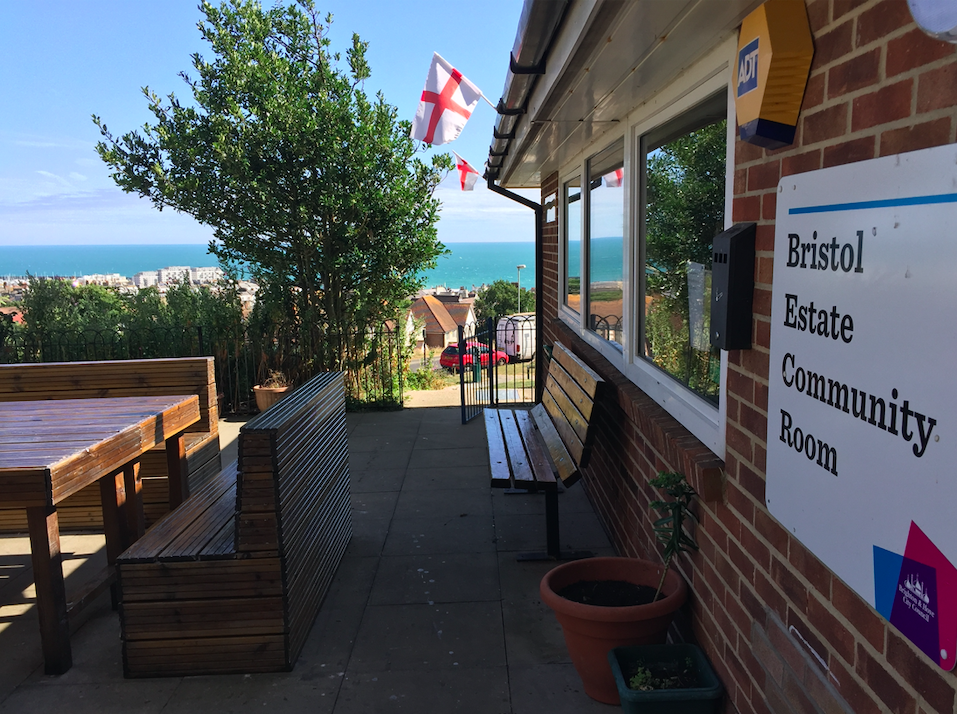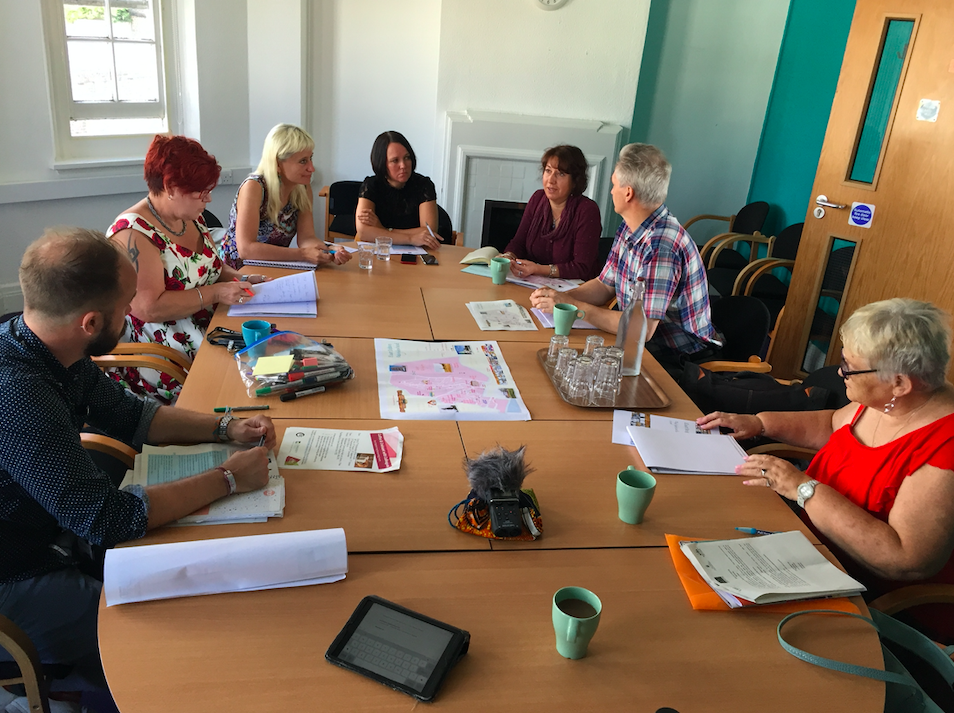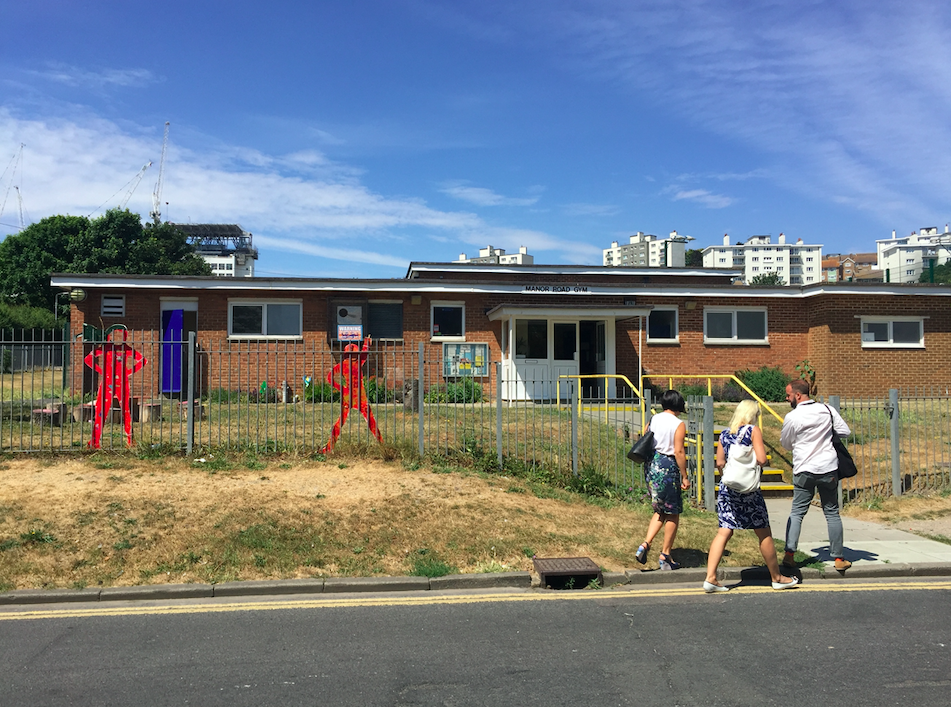Commissioning models by which the public sector externalises the provision of public services often favour large companies, excluding smaller providers. In an attempt to set up a legislative framework through which communities’ needs can be better targeted and addressed, the UK government has since 2018 supported the model of “collaborative commissioning.” This means that local authorities are encouraged to involve local, smaller stakeholders from the voluntary and community sector in commissioning, initiating a collaboration for the co-design of services.
Collaborative commissioning is an approach that highlights the importance of collaboration and co-design in granting third sector organisations with funding for their activities. Instead of setting applicants against each other, collaborative commissioning supports applications in partnerships, especially the collaboration between more established organisations and more informal, bottom-up initiatives, prompting organisations to find mutual overlaps of interests.
The Brighton & Hove City Council introduced collaborative commissioning in 2017, based on 18 months of preparatory work. After two funding cycles, the model is still ongoing and the Council is keen to innovate and move forward. In this interview, John Reading, Third Sector Manager and Donna Edmead, Contracts and Monitoring Officer at the Brighton & Hove City Council explain the process and challenges of collaborative commissioning.
What is the role of Collaborative Commissioning in the Brighton & Hove Collaboration Framework?
JR: There are two aspects to collaboration in the commissioning that we’re doing. One is the collaboration between the Council and the local community and voluntary sector, the “third sector.” In the program we don’t fund private organisations, nor do we fund public organisations. We only fund organisations that are registered charities. Through this process, third sector organisations get to develop their ideas through consultation, establishing the priority of needs, looking at the barriers that may exist by the client groups they represent and by accessing funding.
From the local community and voluntary sector point of view, the core requirement to access the Third Sector Commissioning Prospectus, a three years funding program of just under £2milion a year, is that all of the bids have to be partnership bids, so to say a collaboration between two or more organisations. That requires organisations within the sector to be able to identify an organisation or organisations where there is mutual overlap of interests for their clientele in terms of developing a project proposal. A simple example of that is a collaboration we’ve been running between an older people’s charity and a sports organisation, taking up the opportunity of developing sports activities through the skill set of the sports organisation but working with older people. The particular success group they’ve worked with over the last 18 months was with people who had dementia and their carers, bringing them together to play football. When you bring those two actors together you create a project that is much stronger, much more innovative and creative than it would have been if the older people’s organisation had done it on its own. That requires organisations to also want to collaborate together. Some organisations might be more inward looking and can be quite defensive about what they do, there may be more than one organisation working with the same clientele and therefore becoming precious about their particular organisation and their way of working.
The observation I have both in terms of overseeing the Prospectus project and having worked with charities for the last 20 years is that some organisations find it easy to work with others and looking for added value for their clientele, some organisations find that very difficult.
DE: The partnership working might be running ahead but was a challenging concept for organisations. In the past the organisations struggled initially to move forward in their thinking to working partnerships, it was a journey we had to take them on. But in the end our working feedback was that it was a good change for them. Organisations have also reported that they have gone forward as partnerships to apply for other funding beyond this program.
Partnership bids seem to be quite a novelty in the legislative framework for access to public funding. How has the third sector reacted to it?
JR: This year the decision to continue the program was partly based on the results of an evaluation report we’ve conducted after the first year of the previous three years funding round. That has identified significant added value from the partnership arrangements. In the consultation events we had with about 185 third sector organisations attending in the period February to June 2019, despite getting some resistance from organisations who do not want to get involved in partnership but rather go back to single organisation grants, the bulk of organisations do see the added value of collaborations. So, the role of the public authority as we would describe it here is to negotiate through consultation what is the best way forward in terms of setting the priorities to be tackled by the funding program. This is a negotiation process that is held both internally with some officers and politicians in the Council and externally with organisations. Negotiations can be very challenging in a large local Council such as Brighton & Hove, including a wide range of perspectives and experiences of the community and voluntary sector. Eventually, this process of negotiation leads to a majority view and to the definition of priorities, criteria and requirements for accessing the collaborative commissioning funding program. This is of course part of the setting of a political agenda, but the politicians talk to the community and there are also linkages through some consultation processes, so I would say there isn’t a disjoin entirely. However, what is true is that the Council eventually holds the power to allocate funding. This means that once the priorities and requirements for the program are set, some organisations who were initially reluctant eventually change their minds and commit to partnerships in order to access the funding. However, there are still organisations who do not bid, for a variety of reasons, such as ineligibility or disinterest.
Has the council done anything to broaden up the spectrum of organisations that get involved in partnerships?
JR: Yes. One of the challenges that was thrown at me by a couple of the executive directors of the Council last year was to broaden the range. Most of the investment in the previous program went to health and social care organisations. So, one of my tasks was to reach out to arts and culture organisations, organisations that work in the green and sustainability agenda. A lot of those organisations are quite different from health and social care organisations. They are often newer, mostly much smaller. So we set up an objective last year to market the program. We brought in a lot of organisations particularly from the arts and culture sectors, but also organisations that work around the green agenda, food, sustainability and so on. We made sure that we had a broader spectrum. In the city there are something like 2.300 community and voluntary organisations. They range from multi-million pound organisations, the biggest one turning over £5 million a year as a charity, to smaller once, the smallest turning some £100/200 per year. There is a huge spectrum representing a whole range of communities, interests, geographical places, identities and so on. However, the number of organizations we got to attend our events was only about 185 out of 2.300. It’s a pinprick, only a 5-7% of the total amount of charities present in the area. Probably half of the investment was committed to 3 big structural projects that we wanted to invest in, so actually there is £872.000 to invest on a broader spectrum and you do it through marketing. However, my experience in the sector is that as soon as there is money being offered, you start thinking of what you can do to get it. There is an interest in the sector to get additional money to work better, to help and support the people your organisation is targeting. So, I think in this sense we could say that there isn’t a real problem in getting the sector to apply for the program, because at the end of the day, it’s money.
DE: The other thing that is special about this funding is that our commission enables organisations to apply for their core funding, their day to day running costs, which can be quite difficult for them to find elsewhere which makes it even more attractive I think.

What is the relationship of the third sector initiatives you support with the social economy sector?
JR: From a conservative party perspective, Big Society volunteering is something they encourage, but here locally in Brighton we don’t have a conservative Council but a Labour administration led by the Momentum Group that has to work particularly with the Green Party. So here the concept of civil society is very different from the concept of civil society suggested by the conservative party. There is a view in our administration that the bigger charities are not very different from the private sector. There was an instance a few months ago where a big contract was awarded to a locally based charity that is also a national charity, turning over £500,000 a year. The newspaper story was that they were a private sector organisation. They are very big, very corporate, they employ a lot of people and they very much have the structure of a private organisation. They happen to be based in Brighton, hence the access to our funding program. However, our local administration is actually very interested in ground level upwards. They are interested in looking at grassroot local organisations that are community based and how to support them. What we are interested in is not larger organisations coming to us for funding. It’s small grassroots community organisations that are not constituted. The challenge for us would be in terms of the marketing for those organisations to know about it and also encourage organisations that are not structured to work with bigger organisations to put their application in. Our local politicians would like to see us support more of these local organisations and small local community groups that haven’t yet evolved sufficiently. One of the concepts they use is community wealth building, meaning the public administration aims at bringing together large third sector organisations working in a specific area and supporting each other, trying to generate work and recirculate money within the city, but the Council’s aim is also to bring together the local community as small groups that develop on a neighbourhood scale.
Can you rely on small, unstructured initiatives to deliver results at the same scale as large, established third sector organisations?
JR: There is an interesting conversation going on right now and the challenge that both Donna and I are facing is to make sure that organisations are structured, sufficiently robust for us to be able to fund them as a local authority, for we have accountability as we’re using taxpayers’ money. In order to be eligible for funding there are all sorts of requirements we are asking for. The basic information we are asking for are a project name bank account, a management committee, a set of rules whichever organisation they are (charity, community interest company…), relevant policies and they need to show when they apply. There is quite a list of documents they have to submit. This is not at all the case for many small community based organisations. For instance, we are launching a specific program for black and ethnic minority communities and we got a small pot of money (£25,000) that we want to use to support organisations that work with the black and ethnic minority community across the city. The challenge there is whether there might be a small organisation that doesn’t have a formal structure, doesn’t have a constitution nor its bank account but actually does really valuable work. How do we support them whilst also meeting a set of public finance and requirements? We can probably do this, but there is a challenge in there. The reason is making sure we’re putting money in an organisation with some accountability that has a constitution setting out on paper how they are supposed to operate. Sometimes they tip from being a group of people trying to do something good and may have to go on a journey reaching a certain point from which we can fund them. There needs to be some security net, some accountability on which we can justify the award. Because we’re public money, we’re asked questions and all that process needs to be described and follow a standard set. Donna and I are constantly working on ensuring that we don’t exclude good work but at the same time that we meet our standard set. Collaboration between partners can also ensure the inclusion of smaller organisations in partnership with bigger organisations that fulfil our accountability requirements.
DE: I can give you an example of this. It has happened that we’ve funded partnerships between more established organisations working with a specific cohort of their community that was going on a journey towards getting a more solid and accountable structure so that they could also meet the requirements for funding as an independent entity. It eventually happened that they then managed to establish themselves as a constituted separate organisation. That was a journey the commission helped out.

What is the position of arts and culture organisation within a broader civic ecosystem dominated by the health and social care sector?
JR: The health and social care sector generally is quite dominant among the ones that get funded because perhaps it is easier to describe a related need. Talking about arts organisations, Brighton has a very strong arts and cultural community and some of those are individual artists who work on their own but some come together to form an organisation seeing the benefits of it. Some of those arts organisations have been on a journey being able to describe the benefits provided by their services. What we tried to do was to bring more of these organisations on the journey. The social value these organisations can bring definitely is about interaction with people, and not always or only through performance. All organisations struggle for funding, so there again, access to funding is an incentive for these organisations to collaborate and commence their journey to be recognized as an established structure.
How challenging has it been for the local community and voluntary sector organisations to get used to this new mechanism? Has this involved any kind of training?
JR: As far as the third sector is concerned, I can give you an example. In the application process that was completed last year around Christmas time, we set a question about equal opportunities (equality and diversity). It was a pass or fail question. We had one particular organisation that succeeded in giving excellent answers to all the other questions but failed in passing this specific question. The whole bid failed. We said this out very clearly that it wasn’t a very difficult question cause we had written the answer virtually for them. So after this experience I thought it is extremely needed to set up a training around this particular area to support the organisations. We have to take people on a journey and see where the weaknesses are. However, I also think there is a limit to what the council can do because we should not hold their hands. You have to give the responsibility back to the organisations.
DE: Regarding that specific example John described, we had given a presentation of the prospectus to the sector and went through the questions showing what we were proposing so they had some warning and had the opportunity to think about it. In a way I feel like we gave them all the instruments. Moreover, when organisations are not successful in securing funding they get feedback on their applications. So, organisations have one forward in their learning seeing where they haven’t been successful and bringing that learning forward into other applications. It’s giving them something to take away.
What are the monitoring and evaluation mechanisms that you have implemented to follow up on the results of the funded organisations and their projects?
DE: There are three things we do every year. We ask funded organisations to complete the half year report in October to give us an update on their outcomes and tell us what they will deliver. Our monitoring may include a visit where they present their project and show us the state of things. So we can see the activities and then at the end of the financial year they submit an annual report and we will look at what they said they would deliver and what the results are and the reasons.
Any lessons learnt?
JR: the irony is that if it weren’t for Covid-19 we would have had a “lessons learnt” exercise completed by the end of May. We wanted to understand what made it far from a perfect process. It is something I hope we will be able to achieve later this year, to apply it to future funding programs. Of course, understanding the impact of the Covid-19 emergency will be essential in the upcoming months for us to be able to adapt to new needs such as a digital shift.
Interview with John Reading, Third Sector Manager at the Brighton & Hove Council and Donna Edmead, Contracts and Monitoring Officer at the Brighton & Hove Council.
This article appears in the book The Power of Civic Ecosystems: How community spaces and their networks make our cities more cooperative, fair and resilient.


